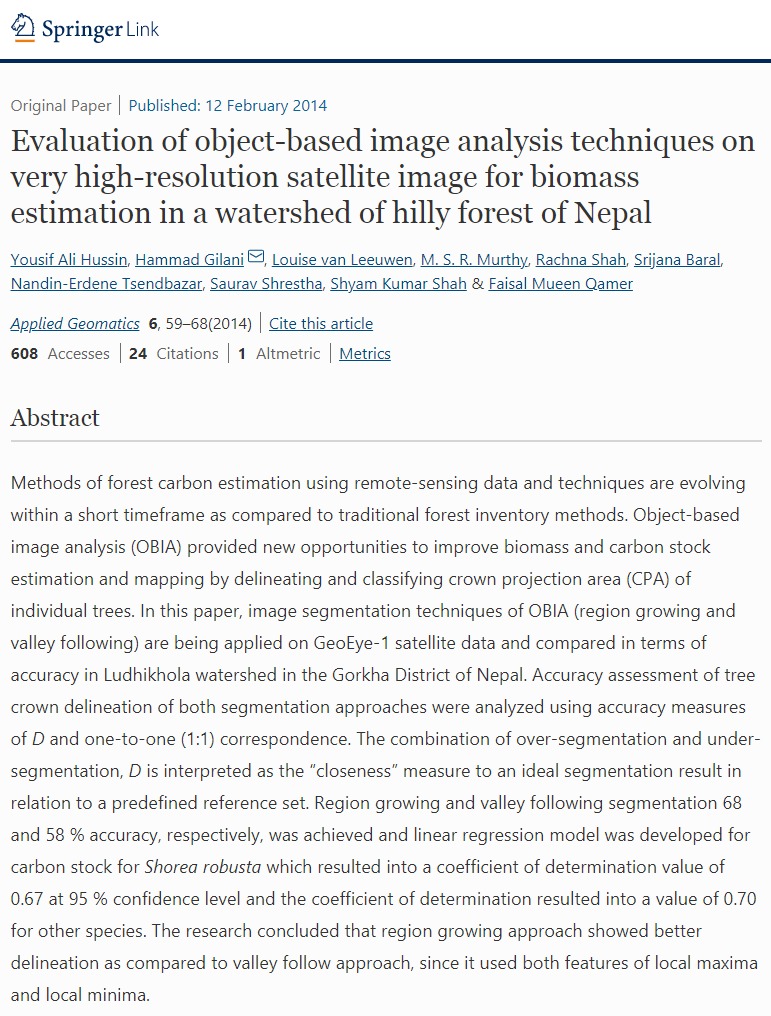
Methods of forest carbon estimation using remote-sensing data and techniques are evolving within a short timeframe as compared to traditional forest inventory methods. Object-based image analysis (OBIA) provided new opportunities to improve biomass and carbon stock estimation and mapping by delineating and classifying crown projection area (CPA) of individual trees. In this paper, image segmentation techniques of OBIA (region growing and valley following) are being applied on GeoEye-1 satellite data and compared in terms of accuracy in Ludhikhola watershed in the Gorkha District of Nepal. Accuracy assessment of tree crown delineation of both segmentation approaches were analyzed using accuracy measures of D and one-to-one (1:1) correspondence. The combination of over-segmentation and under-segmentation, D is interpreted as the “closeness” measure to an ideal segmentation result in relation to a predefined reference set. Region growing and valley following segmentation 68 and 58 % accuracy, respectively, was achieved and linear regression model was developed for carbon stock for Shorea robusta which resulted into a coefficient of determination value of 0.67 at 95 % confidence level and the coefficient of determination resulted into a value of 0.70 for other species. The research concluded that region growing approach showed better delineation as compared to valley follow approach, since it used both features of local maxima and local minima.